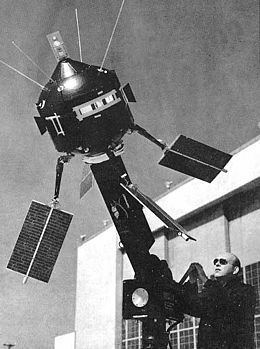Mission type Atmospheric studies COSPAR ID 1967-042A Mission duration 43 months Inclination 80.17° Launch mass 89.8 kg Perigee 496,000 m | Operator SERC / NASA SATCAT no. 2773 Rocket Scout A Period 1.6 hours Apogee 599,000 m Launch date 5 May 1967 | |
 | ||
Similar Ariel 2, Ariel 4, Ariel 1, Ariel 5, Ariel 6 | ||
La sirenita canci n de vanessa espa ol turkish subtitles
Ariel 3 was the first artificial satellite designed and constructed in the United Kingdom. it was launched from Vandenberg Air Force Base on 5 May 1967 aboard a Scout rocket. Ariel 3 had an orbital period of approximately 95 minutes, with an apogee of 608 km and a perigee of 497 km. It initially spun at 31 rpm for stability, though by the time the Ariel 3 deorbited, it had slowed to a rate of about 1 rpm.
Ariel 3 carried five experiments. The experiments measured properties of the thermosphere as well as detected "terrestrial radio noise" from thunderstorms and measured large-scale galactic radio frequency noise. Experimental data was recorded on an onboard tape recorder, then later transmitted to waiting observers on Earth. Ariel 3 was also fitted with a series of mirrors to allow easy observation of the satellite. On 24 October 1967 the tape recorder aboard Ariel 3 began to malfunction. This restricted observation to real-time operation only. Ariel 3 suffered from a significant power failure in December 1968, restricting the satellite's operation to daylight hours only. The satellite was completely shut down in September 1969. Its orbit decayed steadily until on 14 December 1970 when Ariel 3 re-entered Earth's atmosphere.
